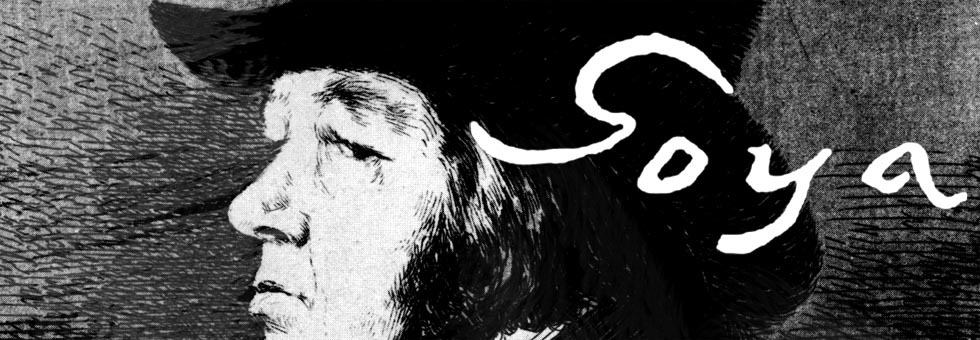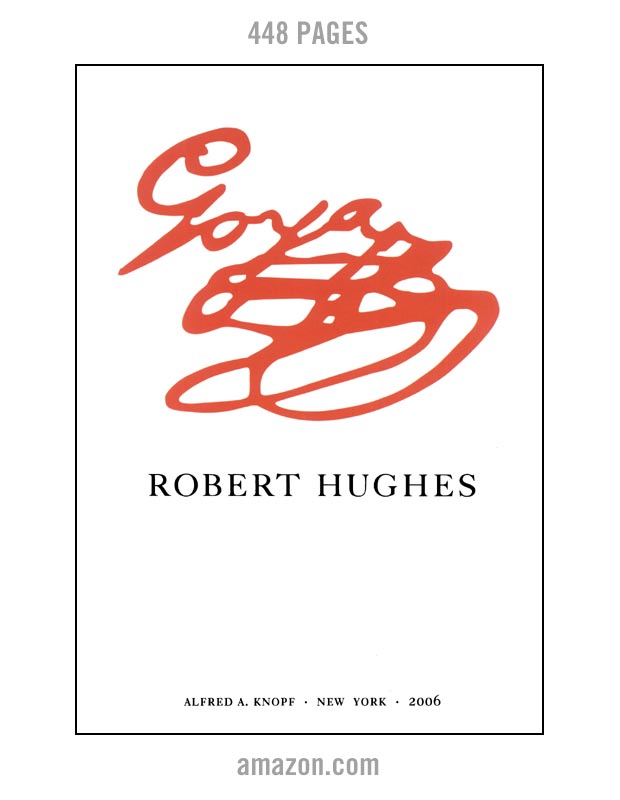Professor Antonio Martinez Pereles
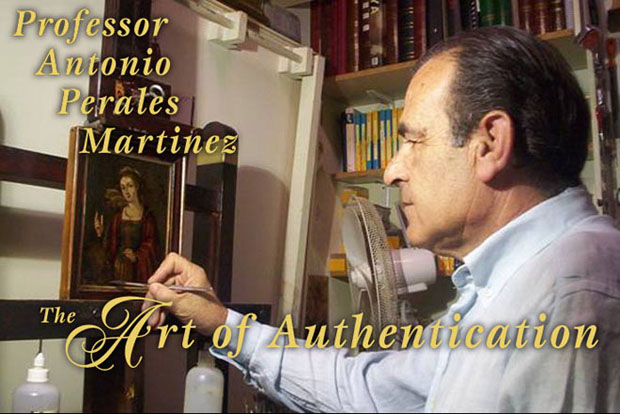
Professor Antonio Perales Martinez
Curriculum Vitae
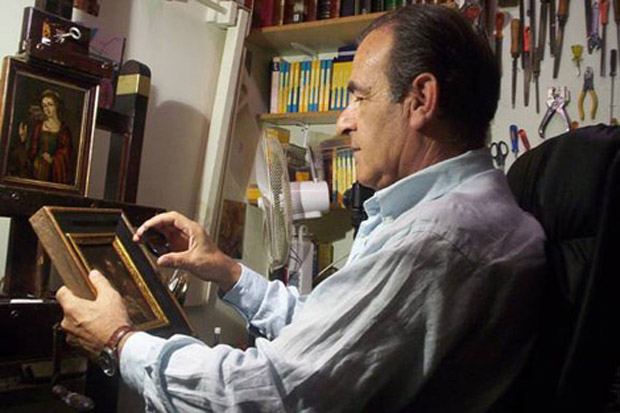
PERSONAL DATA
Name: Antonio
Family Names: Perales Martinez
Date of Birth: May the 13th. 1947
Place of Birth: City of Madrid
Country of Birth: Spain
Profession
Master Technician in Conservation and Restoration of works of arts specialized in authentification, expertise and restorations of the works of Francisco de Goya y Lucientes.
ACADEMIC DATA
1958-1964
High school “Decroly” (Madrid) 1965Senior high school
1966-1969
Higher studies in “Escuela Superior de Arquitectura de Madrid”
1969-1970
Graduated in Interior Architecture (official title) Graduated as Technician in books and documents restoration from Historic Spanish Patrimony.
1971-1974
Master art restorer of Works of Art (specialized in easel paintings). Commissioned and licensed to do the actual restoration of several paintings from “La Casa de las Conchas de Salamanca, Spain.”
1975-1977
Diploma of artistic metallurgic from the “School of Applied Arts in Madrid.”
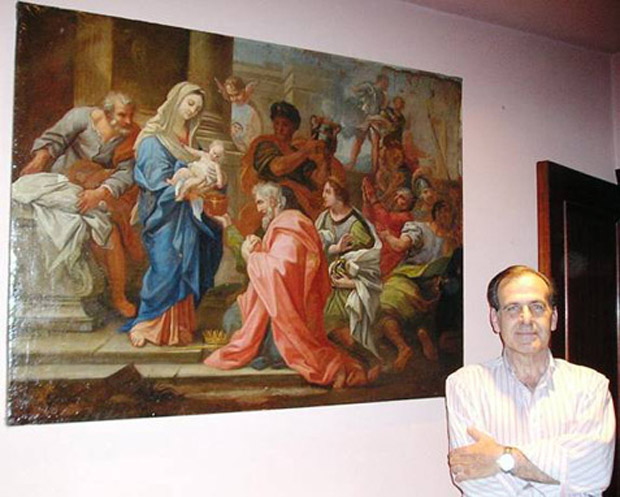
Prof. Antonio Perales in front of a restored Goya.
PROFESSIONAL INFORMATION
1967-1969
Private Sector as collaborator and artistic advisor of the Publicity Enterprises CINE, DIS of the group PUBLIDIS.
1969-1970
National Spanish Institute of Statistics (Department of calculus).
1970-1971
Books and documents master restoration technician at the National Historic Archive (dependent of the Ministry of Culture) specialized in engravings, drawings, sketching, scrolls, parchments and sigil graphics.
1978-1985
Appointed Professor to the Artistic Metallurgic School of Applied Arts of Madrid. (Ministry of Culture).
1986-2000
Master restorer technician at the National Institute of Historic Patrimony adjoined to the Ministry of Culture, in the specialty of easel painting.
2001-2005
Multiple activities as lecturer, professor and master restorer for both the public and private sectors.

Professor Perales keen eye at work in the pre-restoration stage.
ACCOMPLISHED OFFICIAL WORKS
- Participated as lead restorer in the restoration and cleaning of the works at “La Iglesia de El Espinar”, Spain.
- EXPO 91, Spain. Entrusted with the supervision and control of the state of all the works of art belonging to the Spanish Pavilion as well as those of the Independent Communities (daily reports), designated by the Ministry of Culture of the Spanish Institute of Historical Heritage. Also simultaneously given the responsibility of supervision and control of the works belonging and exposed at the Vatican’s State Pavilions.
- Officially sent to Quito, Ecuador as professor for teaching and forming restoration technicians.
- Lectures and conferences in “Casa de la Cultura”, Quito, Ecuador about pictorial techniques.
- Main lecturer at the “Cuzco University of Peru” detailing the restoration process of an oil over canvas painting entitled “Los Padres de la Iglesia” (Church’s Fathers) of the XVII century.
- Conferencist at the Central Bank of Ecuador. Subject: Applied Restoration techniques. Several worldly renowned experts shared the podium. Officially sent by the Institute of Iberoamerican Cooperation and the Spanish Ministry of Culture.
- Teaching of broadening studies of Art Restoration at Albarracin (City of Teruel, Spain) declared as Humanity’s Patrimony, specially addressing recently received technicians. Conference and intervention about the works of the Church (La Iglesia) and town’s Museum, both under the sponsoring of the Spanish Institute of National Historical Patrimony.
- Charged with technical reports and recommendations as well as the budgeting to undertake the restoration works at the “Catedral de Tudela”, by commission of the (IPHE).
- Supervision and control of the art works presented in the exposition titled “The Private Space” (El Espacio Privado) in the ancient Spanish Contemporary Art Museum.
- In charge of the restoration of multiple art works exposed in the rooms of Central Bank’s Hispanic Foundation during the “Recuperated Art Works Exposition”.
- Restoration and supervision of the works of painter Ortega Munoz at the Spanish Contemporary Art Museum.
- Supervision of the presentation of the pictorial works of the “Filippo Juvara Exposition” at the Madrid Royal Palace.
- Conferencist about the new restoration’s technique of painting over paper foundation for the ICOM Congress in Tarragona, Spain.
- Technical report on the conservation state of works in the National Museum of Ceramics in Valencia, Spain.
PATENTS AND COPYRIGHTS
The investigations, researches and discoveries of Goya’s personal “imprints” of graphisms imbedded in his painting as well as the required methodology for authentification have been duly registered in The Registry of Intellectual Property of the Spanish Ministry of Education and Culture of Madrid, under the title: “The micro signatures that Goya imprints in his works.” Dated April the 16th, 1996.
And:
"Francisco de Goya and the SYMBOLISMS as a genial form of expression" February the 23rd. of 1998. Under the numbers 44.834 and 70.990
During his career Professor Perales Martinez restored 50 paintings of Francisco Goya. He has certified and authenticated, in conjunction with Chemical Science Professor Enrique Parra Crego by technical and scientific means (X Rays, chromatography, spectrometry, chemical analysis of pigments, light absorption, canvases strands composition, microscopic inspections, etc.) numerous inedited and previously unknown Goya’s paintings. Recent discoveries have been the three Goya’s paintings property of the "Escuela Tecnica Superior de Ingenieros de Caminos de Madrid".
A Goya's oleo titled “Portrait of Marquis of Santa Cruz” property of the Real Spanish Linguistic Academy. The long lost oleo “La Dolorosa” or “The Lady of Sorrows” mentioned in one of Goya’s personal letters to his dearest friend Martin Zapater as published in the Museo del Prado’s book “Goya, Pintor Religioso”, page 59, Note Number 30.
March 17, 2010
Professor Antonio Pereles has died
I received news from the goyadiscovery site that after a long illness, Professor Pereles has passed away. Below is a spanish language video of an interview with the professor about Goya.
Watchdog Foundation to overview transparency of commerce in works of art.
Article published by Paula Ruiz of the Spanish newspaper
La Razon on October 19, 2005, page 32 Culture and Spectacle section. Used by permission.
A "watchdog" foundation that will overview the transparency of commerce in works of art is born in Europe (Spain).
Barcelona. - A new entity destined to create confidence in the Art Market was presented yesterday at the recently opened "Torre Agbar de Barcelona".
The World Art Service Foundation (WASF), is the official name of the organization, a non-profit organization intending to bring "judicial security" which would warranty the transparency in all transactions involving the commerce of works of art.
According to its President Mrs. Isidre Faine, general director of the La Caixa (a Spanish financial institution), it is born out of the desire of a civil society wishing to invest in artistic objects due to a greater wealth.
One of its objectives is to generate a series of recommendations addressed to the European Commission of Trade so it can elaborate proposals to protect the public as well as the private artistic patrimony. It is also its intention to involve artists, experts, art galleries and museums of the whole World.
The ceremony was attended by, among many others, Don Jose Ramon Santolalla, first vice-president of the WASF foundation and chief responsible of the "Central International Archives for Objects of Art" (AICOA), Sergi Pastor, second vice-president and sponsor delegate of the institution and Luis Bassat a member of the foundation committee.
It was emphasized that this foundation was born as a response to the more than 40,000 art robberies that every year happen in the world, according to the INTERPOL and to the more than 200 millions of Euros (around 280 millions of dollars) lost to falsification cases. In this sense, Faine reminded that it is important to know the history of a painting, its origin, where has it been and where it is now. This is what we called traceability.
Santaloalla also said that we must help the European Commission to design new directives covering the traceability of the art objects, supply the necessary technical means to implement and enforce both the judicial as well as the documentation aspect.
One step to be undertaken is to elaborate and implement a file or dossier of the work of art in question, where indications such as attribution, authorship, state of conservation, whether restoration is or has been required, etc. Other aspects will be worked upon in order to obtain its objectives and increase the confidence in the art market at the international level.
A Pioneer Organization.
Behind this foundation one can find as founder partners, two important enterprises: Applus, the first certificating entity in Spain and the Archivo Internacional Central de Objetos de Arte (AICOA) one of the most relevant archives for objects of art in the world. Besides these institutions there can also be found personalities and celebrities as main promoters of this initiatives, the Duchess of Alba, the Baroness Carmen Thyseen (famed Thyssen Museum of Madrid), sister Esther and Alice Koplowitz, Juan Abell, Joaquin Folch, among others.
The Foundations disposes of a capital of 360,000 Euros and a staff of 10 persons.
Among the Investigation and Development programs it is sought to advance the project "EXPERTOA", a program of "technical" expertise services of works of art. Furthermore, it is intended to publish a book about the styles and vocabulary of the art, as well as a historical and scientific chronology on the History of Art, since its beginnings.
There is also the intention to create a data base on the REFERENCED PIGMENTS conducive to accomplish the studies of the paint and of the particular different techniques of their creators to be able to ensure the validity of each of their works.
At the same time, a "Green Book" will be implemented in which all generic aspects about normalization; expertise as well as traceability appears.
Article published by Paula Ruiz of the Spanish newspaper
La Razon on October 19, 2005, page 32 Culture and Spectacle section.
Copyright La Razon. Reprinted here by permission.
Be sure to look at the web site www.goyadiscovery.com for further information on Prof. Perales.
For a counter view, see the article on Chief Goya curator Manuela Mena from the Prado museum here
Articles about Professor Perales' work
"World Art Service Foundation" to bring "judicial security" in autentication of paintings. Reprinted in translation from Spain's La Razon newspaper (on this page, scroll up)
Fundetel Article: What's Happening with Goya?
Professor Perales and Micro-Signatures - Article from Subastas Magazine
Related: Goya Graphisms in "Dead Turkey"
AMAZON
Goya The Terrible Sublime - Graphic Novel - (Spanish Edition) - Amazon
"From this headlong seizure of life we should not expect a calm and refined art, nor a reflective one. Yet Goya was more than a Nietzschean egoist riding roughshod over the world to assert his supermanhood. He was receptive to all shades of feeling, and it was his extreme sensitivity as well as his muscular temerity that actuated his assaults on the outrageous society of Spain." From Thomas Craven's essay on Goya from MEN OF ART (1931).
"...Loneliness has its limits, for Goya was not a prophet but a painter. If he had not been a painter his attitude to life would have found expression only in preaching or suicide." From Andre Malroux's essay in SATURN: AN ESSAY ON GOYA (1957).
"Goya is always a great artist, often a frightening one...light and shade play upon atrocious horrors." From Charles Baudelaire's essay on Goya from CURIOSITES ESTRANGERS (1842).
"[An] extraordinary mingling of hatred and compassion, despair and sardonic humour, realism and fantasy." From the foreword by Aldous Huxley to THE COMPLETE ETCHINGS OF GOYA (1962).
"His analysis in paint, chalk and ink of mass disaster and human frailty pointed to someone obsessed with the chaos of existence..." From the book on Goya by Sarah Symmons (1998).
"I cannot forgive you for admiring Goya...I find nothing in the least pleasing about his paintings or his etchings..." From a letter to (spanish) Duchess Colonna from the French writer Prosper Merimee (1869).
GOYA : Los Caprichos - Dover Edition - Amazon
